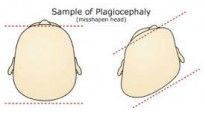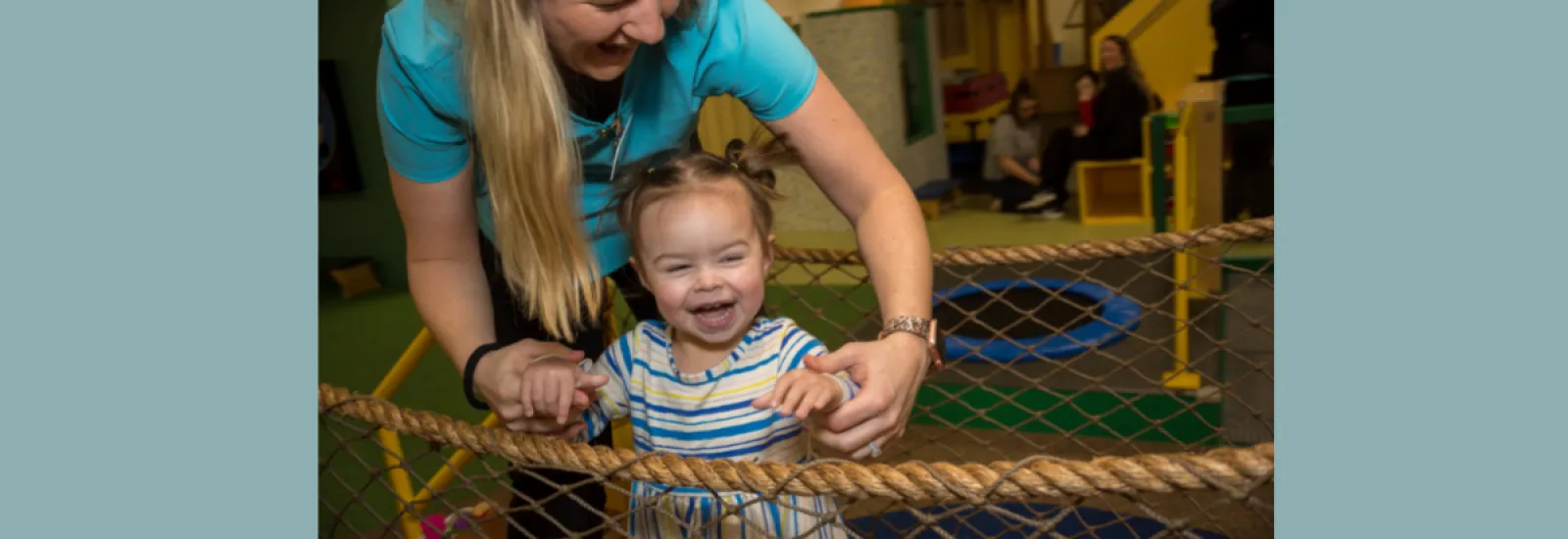
Physical Therapy
Pediatric
physical therapists specialize in the evaluation and treatment of
developmental, neurological, and genetic conditions through the span of a
child's life. Physical therapists aim to address deficits in gross motor
function, while encouraging learning through play. Using a variety of treatment
methods, pediatric physical therapists address balance, strength, motor
planning, and coordination through patient-specific interventions, helping
children to achieve their maximum level of function with growth and
development.
Gross motor developmental milestones
Birth to 3 months
- Lifts head off surface when on belly
- Rolls back to side
- Moves arms and legs while laying on back
- Looks/tracks and reaches for faces or high color contrast toys
3-6 months
- Prop sit for 30 seconds
- Pulls to sit while holding onto fingers
- Prop on extended arms when on belly
- Grab both feet and bring to mouth when on back
6-9 months
- Sits without support for 60 seconds
- Rolls from back to belly and belly to back
- Begins to get onto hands and knees and rock forward/back
- Reach for a toy while sitting and return upright
9-12 months
- Crawls on hands and knees
- Pull to stand at support surface
- Cruise along furniture
- Stand independently for short periods
- Walk with push toy
12-18 months
- Walk 10 steps independently
- Squat to stand without using support surface
- Creep up/down stairs on hands and knees (14-15months)
- Lifts foot in contact with ball
- Walks up/down stairs using rail non-alternating (15-18 months)
18-24 months
- Runs forward, few falls
- Kicks a ball
- Rides push bike
2 years
- Jumps forward, up and down
- Walks up stairs with alternating feet without support
- Stand on one foot for 3 seconds
- Catches ball with arms
3 years
- Walk down stairs with alternating feet without support
- Stands on one foot for 5 seconds
- Rides tricycle
- Climb up rock wall
- Hop on one foot
4-5 years
- Hops forward on one foot
- Pumps self on swing
- Skips forward 10 feet
- Can do jumping jacks with coordination
- Able to do monkey bars
Gross Motor Development
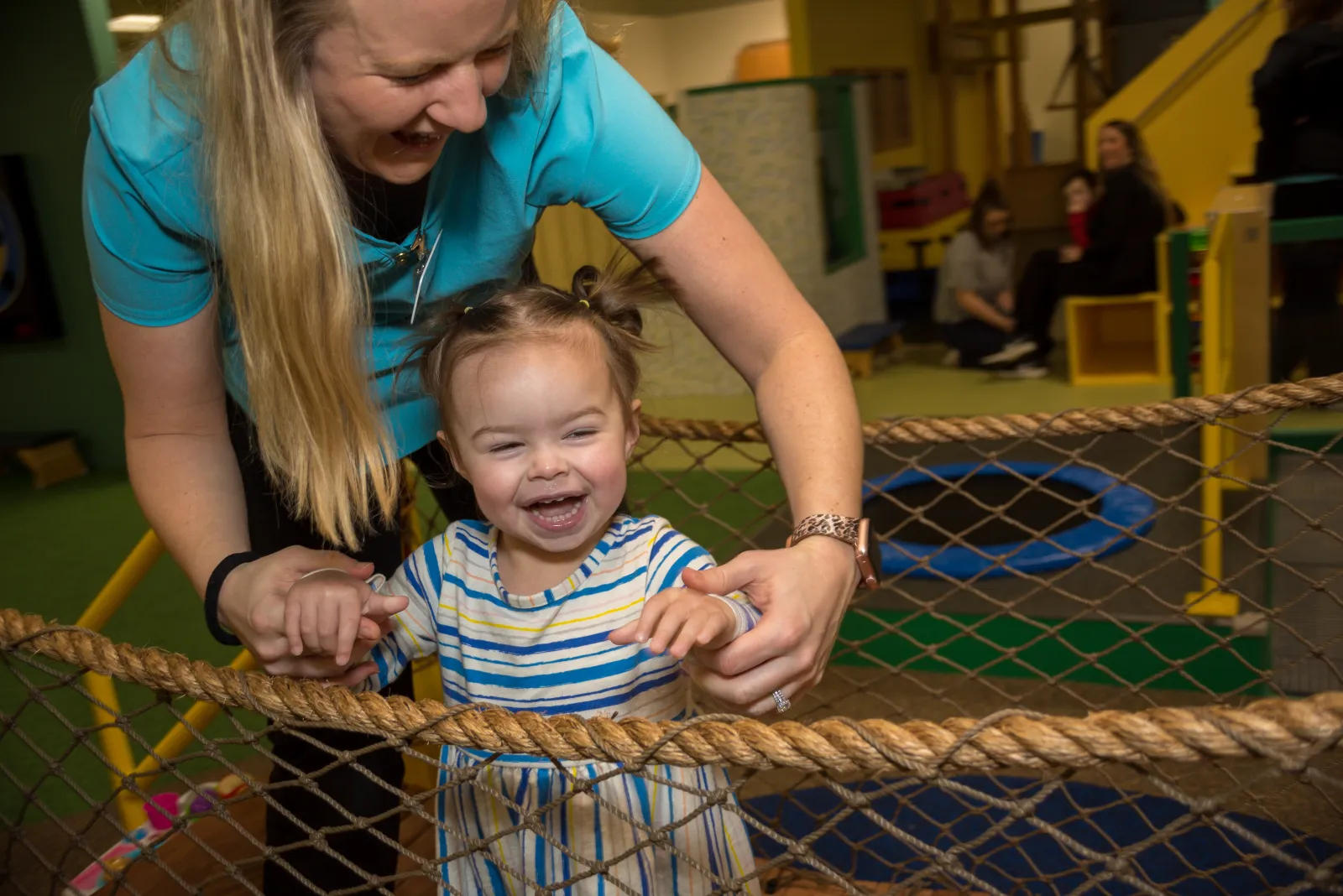
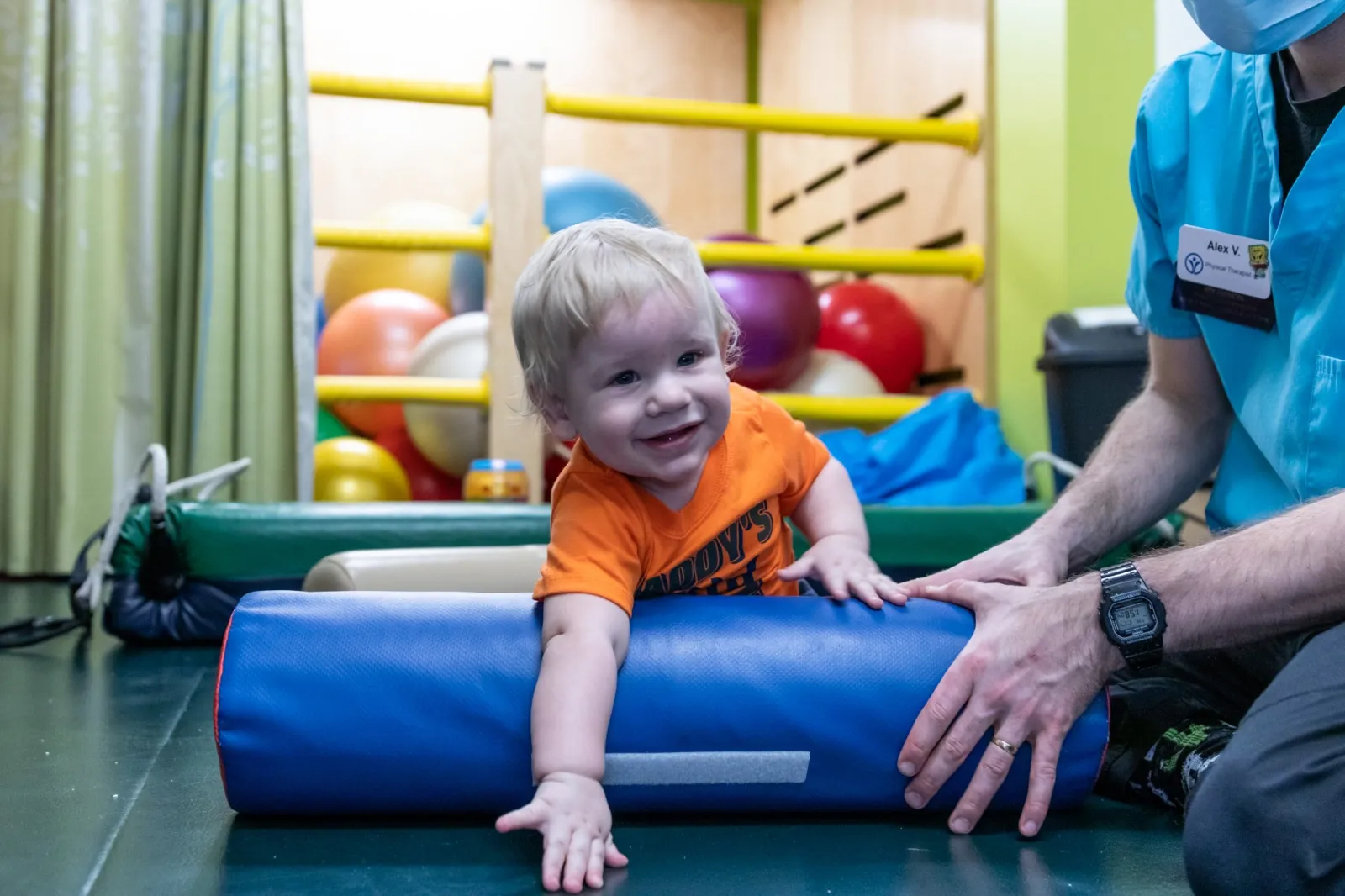
Our pediatric physical therapists can assist with helping
your child achieve their gross motor skills to their fullest potential.
Gross motor skills involve large muscle groups in the trunk, arms, and legs to
complete whole-body movements. This includes activities such as rolling,
sitting, and crawling as well as climbing, jumping, stair climbing, and so much
more! By developing and improving flexibility, strength, balance and
coordination, our physical therapists guide your child to reach their
developmental milestones.
Gait Training
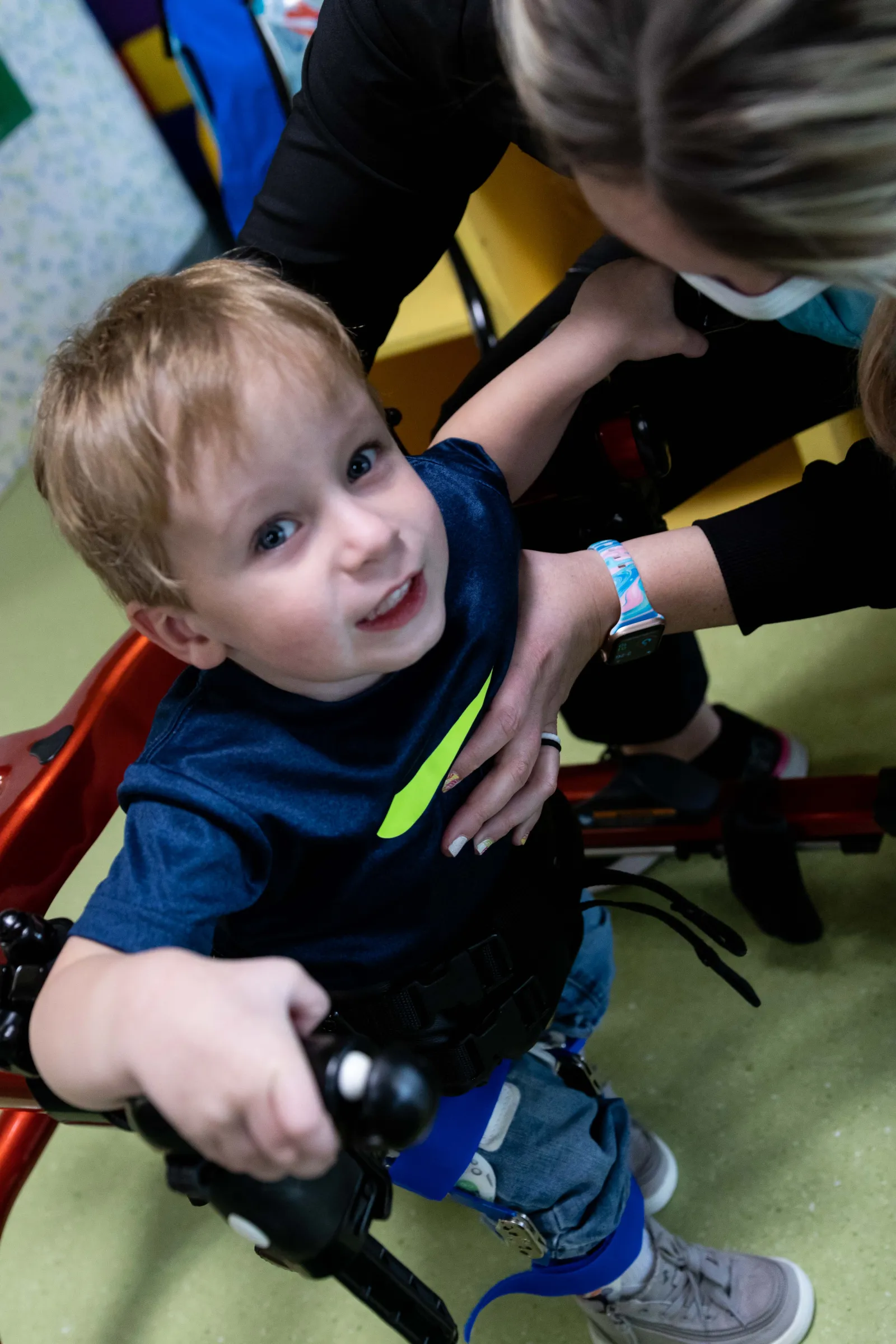
In order to improve your child's ability to walk, our
pediatric physical therapists will use a number of different adaptive and
assistive devices based on your child's specific needs. These may include gait
trainers, walkers, canes, body weight supported treadmill training, and use of the
Mass system, a ceiling track system with a harness that will fully support your
child as they confidently try new and adventurous balance and walking tasks.
While utilizing these devices, your child's therapist will provide manual
assistance as needed to optimize your child's ability to ambulate, as well as
lead your child through exercises that aim to increase muscle strength and
balance, which will then assist with performance during gait.
Functional Transfer Training
Pediatric physical therapists can assist your child in improving
their independence by helping them develop their ability to move around in
their environment—both at home and in the community! Our PTs help
children perform functional transfers such as sit to stand transfers, floor
transitions, car transfers, and transitioning from their wheelchair to their
walker or gait trainer. Physical therapists are skilled to provide safe
techniques to help your child and family perform transfers without risk of
injury or falls.
Balance/Coordination
Balance and coordination are very important to your child's
ability to play and participate with family and peers. There are a number of
systems within the body that control balance and coordination. These include
the ability to feel and understand where the body is in space, muscle strength,
the sense of equilibrium, vision, cognition, and the efficiency with which the
brain sends messages throughout the body to initiate movement. Our pediatric
physical therapists will determine which of these systems need help, and assist
your child in making improvements in these areas. Some specific ways that the
physical therapist may help include: sustaining balance on different types of
surfaces and in different positions, breaking down difficult tasks like
skipping into simpler parts, and providing your child with novel challenges
that facilitate communication between both sides of their brain! Your child may
benefit from balance and coordination therapy if:
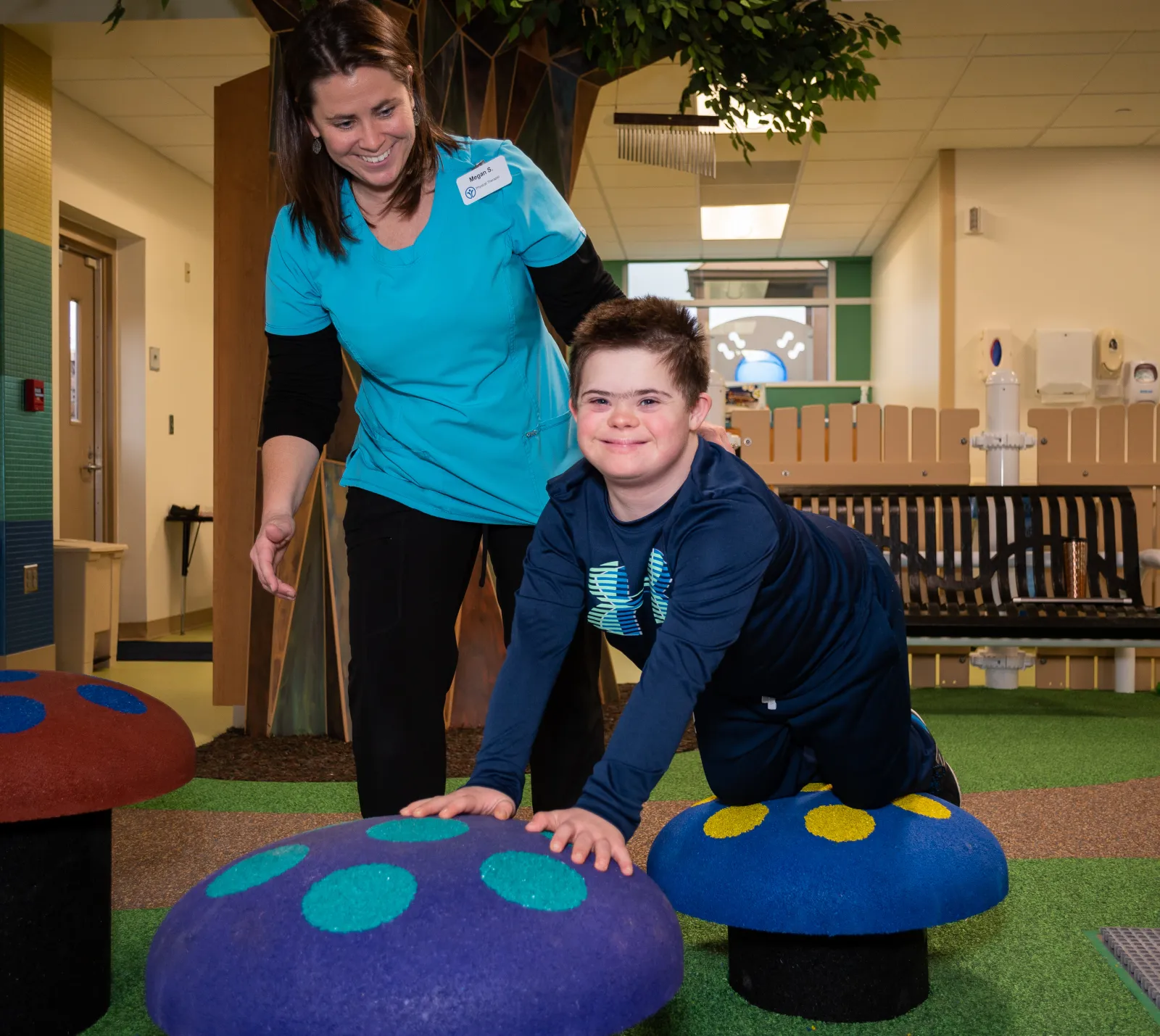
- They fall often
- Mistakenly run into
objects while moving around
- Are unable to complete
age-appropriate tasks such as jumping jacks or throwing and catching
(these tasks will vary based on your child's specific age)
- Are unable to maintain
balance in differing sensory situations such as while standing on foam or
with eyes closed.
Bracing and Adaptive Equipment
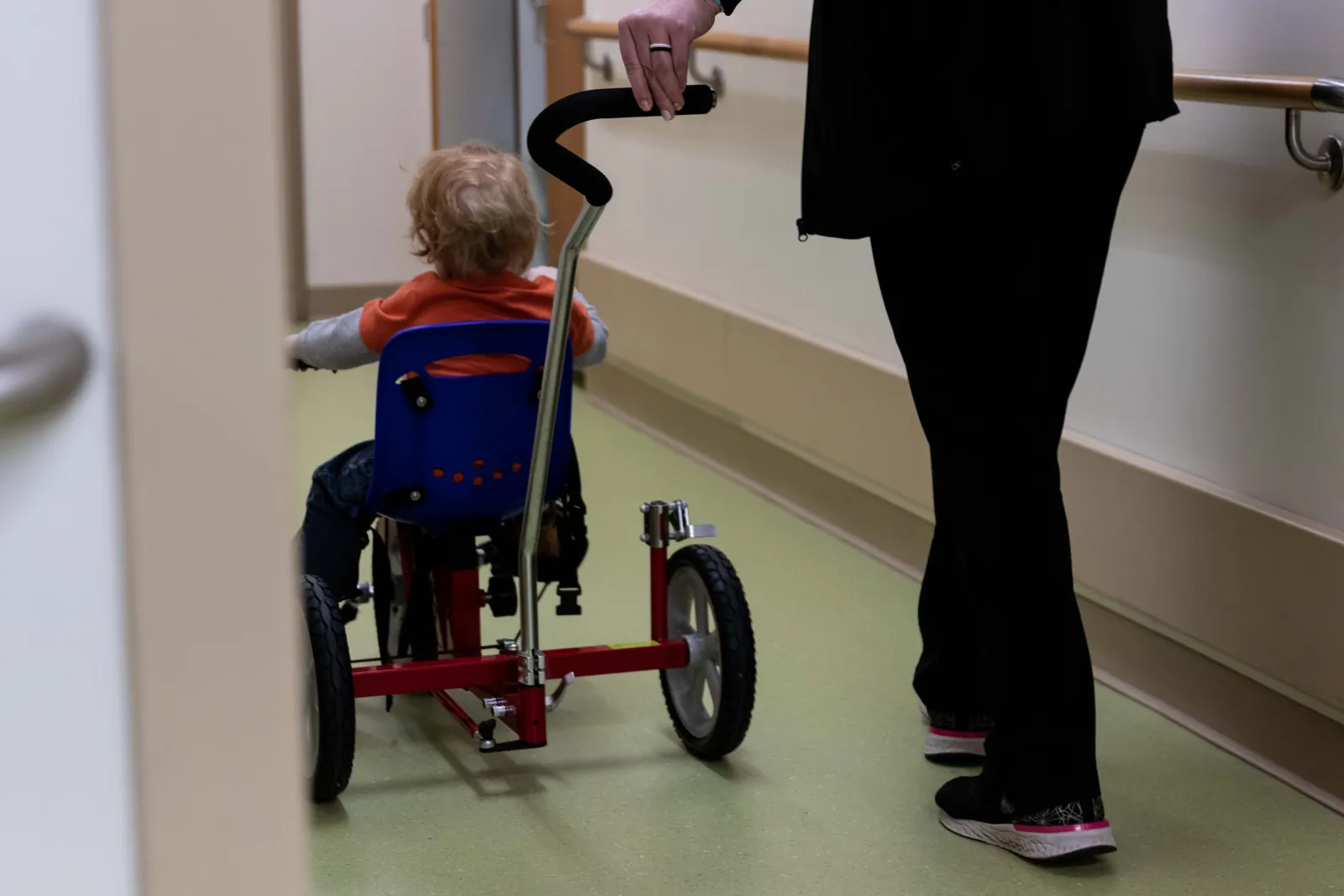
PT's can collaborate with orthotist for best selection of orthotic to best support your child to meet developmental milestones. In addition, PT's are trained to assist with orthotic management, ie knowing when orthotics are too small or not fitting properly. PT's can also assist with equipment recommendations to help your child be successful in their environment.
Braces and splints are custom made for each child. Due to growth, children usually require a new set of braces about once per year. There is often much life left in the braces once kids outgrow them. In areas of the world that lack access to healthcare, second-hand braces may be the child's only option. Stephanie and Alex from Reid's pediatric therapy team have worked with clinics in Honduras and Haiti and saw firsthand the benefits of donated equipment such as braces and mobility devices. Reid Health has made arrangements for collected items to be donated to areas of need throughout the world. Used braces and splints can be dropped off at the Outpatient Rehab building at 2021 Chester Blvd for donation.
Body Weight Supported Treadmill Training
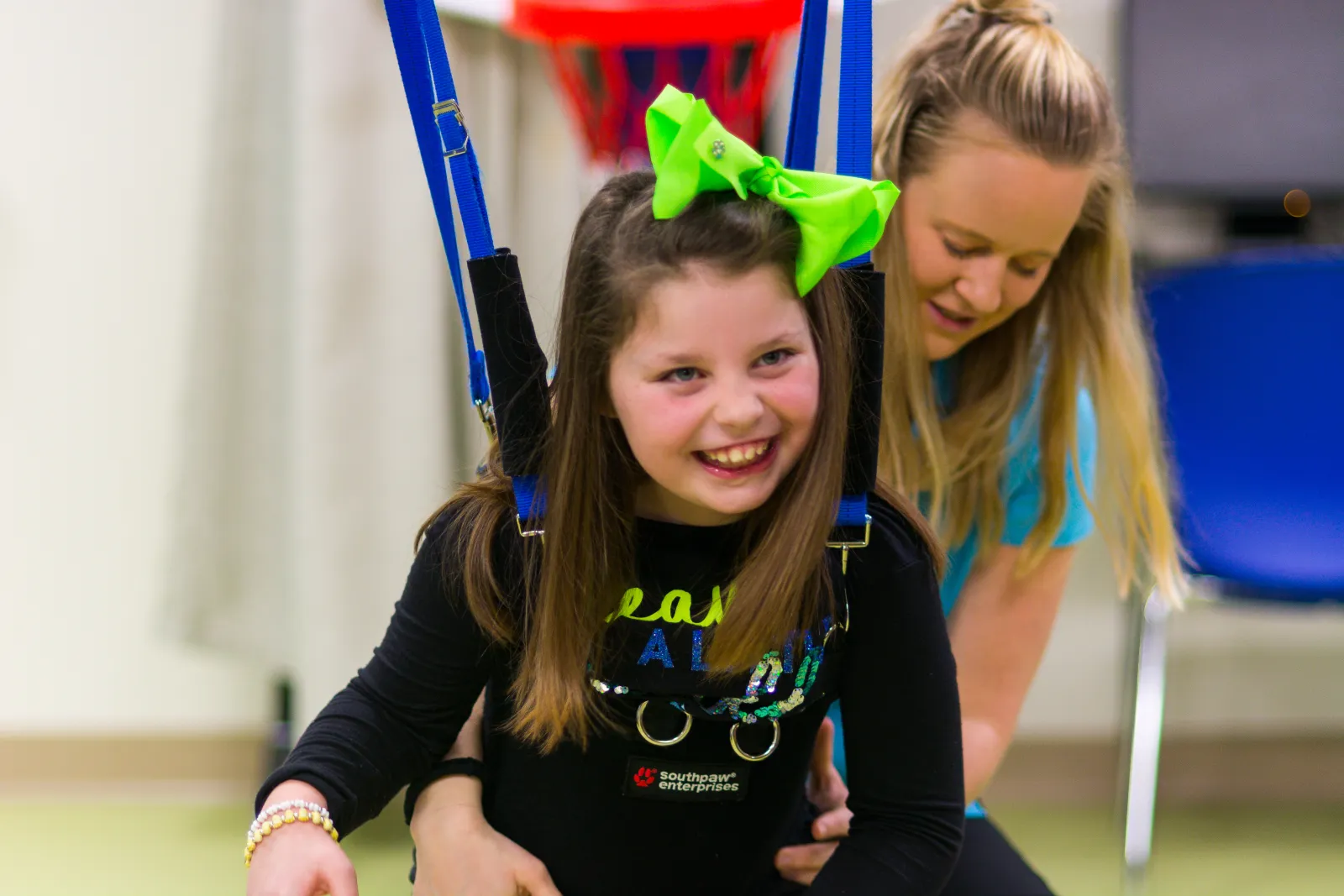
Use of suspension system to help unload body weight during
walking for kids who are not yet walking independently. Body weight support provides a safe
environment for balance/fall protection when walking over ground or over
treadmill in preparation for independent walking.
FES (Functional Electrical Stimulation)
The therapists at Reid have received training through
Restorative Therapies and are excited to treat our patients using the Xcite system,
which assists with proper motor sequencing during completion of functional
movement tasks and the RT300 iFES "bike" for arm, leg, and core activation
while benefitting muscle tone. Restorative Therapies is an Industry leader for
functional electrical stimulation, and these products are considered the
standard of care in neurological rehabilitation.
Functional electrical stimulation (FES) works by using
"safe, low-current electrical pulses to activate paralyzed or deconditioned
muscles for functional movement". While using the FES equipment our therapists
have the ability to stimulate up to 40+ muscle groups while engaging the
patient in a functional task. Both of these systems provide real-time
biofeedback and specific progressive resistive exercise (PRE) to recondition
weak or neurologically impaired muscles
FES has
been cleared by the FDA to:
- Reduce muscle atrophy
- Reduce muscle spasms
- Improve local circulation
- Maintain or increase range of motion
- Facilitate muscle re-education
Aquatic Therapy
Physical therapy in aquatic environment is used to help
increase flexibility and ROM of muscles and joints, resistance provided by the
water increases muscle strength, and the buoyancy of the water supports body
weight making functional mobility easier compared to on land. In addition, the
warmth of the water creates a very calming and relaxing environment for kids
who have high resting muscle tone and/or spasticity.
Kinesiotape
Is a uniquely designed elastic tape that can be worn for
hours to days for continued therapeutic benefit. Taping can help promote
postural alignment, enhance muscle activity, reduce pain, and swelling in
conjunction with therapy.
Physical Therapy Common Diagnoses
Torticollis (including plagiocephaly)
Torticollis means "twisted neck" in Greek. This
condition is non-painful and generally involves both a
rotational aspect and a bending aspect, caused by the
tightening of the sternocleidomastoid (SCM) muscle.
With tightening of the SCM, your baby will bend their
head toward the affected side and rotate their head
toward the unaffected side. Torticollis is named based
on the side of the affected SCM, and therefore the side
of the head tilt.
For example:
If your baby tilts their head to the Right, and rotates
toward the Left, they have Right torticollis.
If your baby tilts their head to the Left, and rotates
toward the Right, they have Left torticollis.
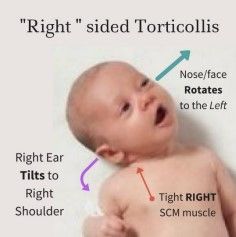
If the SCM is tighter on one side, your baby's torticollis may be discovered by 2-3 weeks of age. Torticollis is usually discovered by 2 months of age when the baby's tilted position becomes more noticeable (mild cases may take longer to notice).
Signs of torticollis:
Long term tightness in SCM muscle and abnormal positioning of the baby's head
Preference for the use of one side of the body
Greater visual attention toward one side of the body
Delayed motor milestones due to decreased use of one side of the body
Plagiocephaly - or the flattening of one side of the back of your child's scull.
